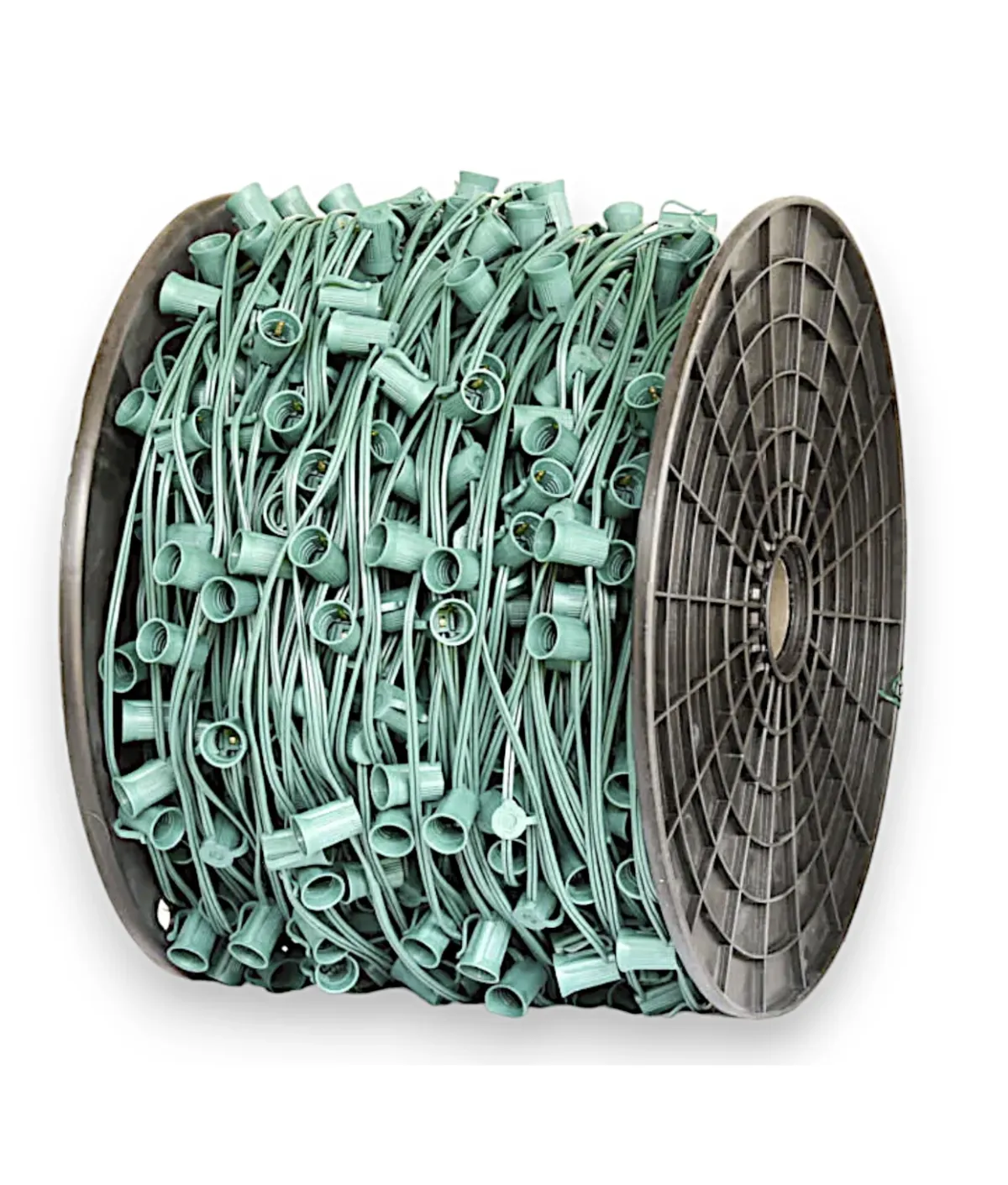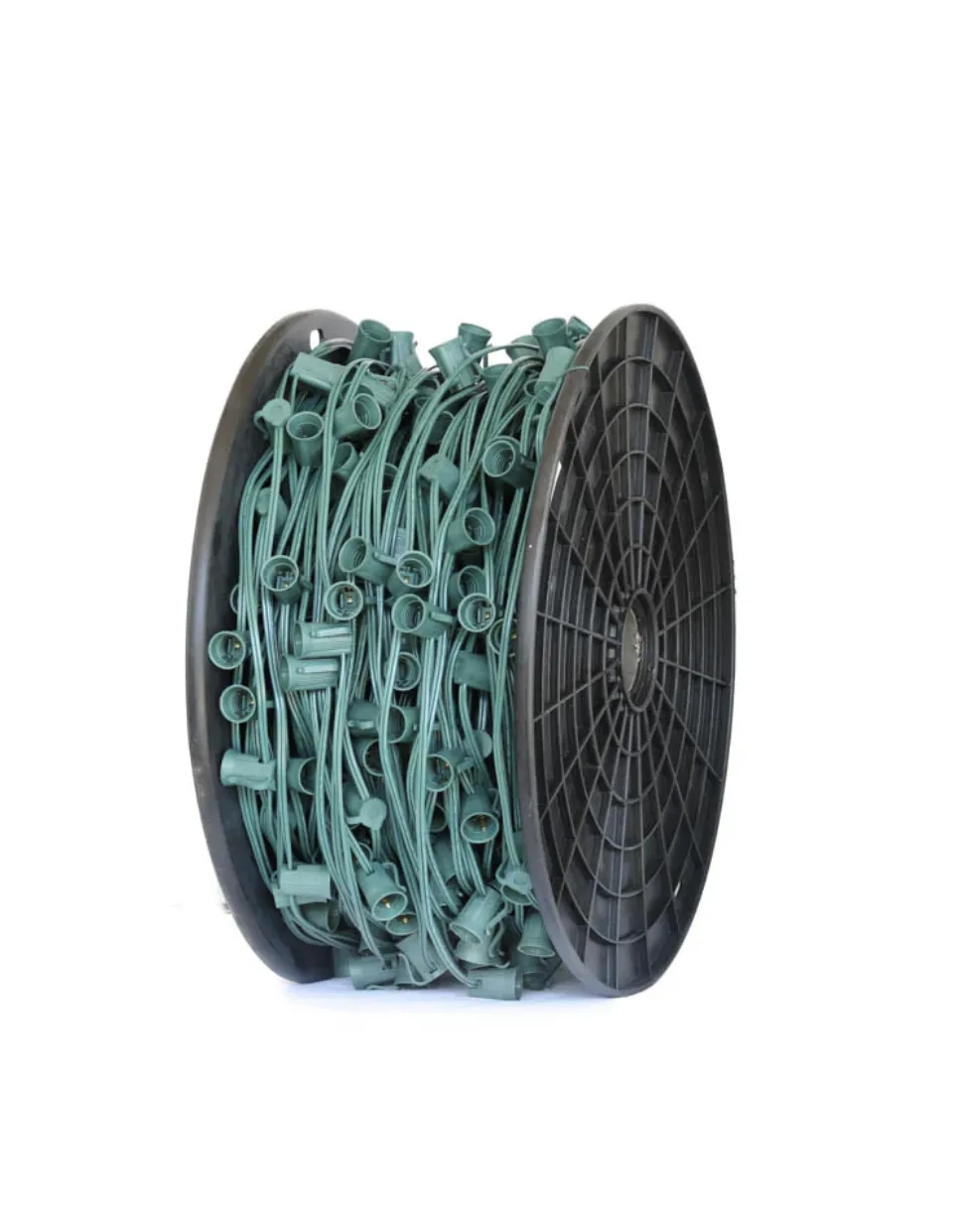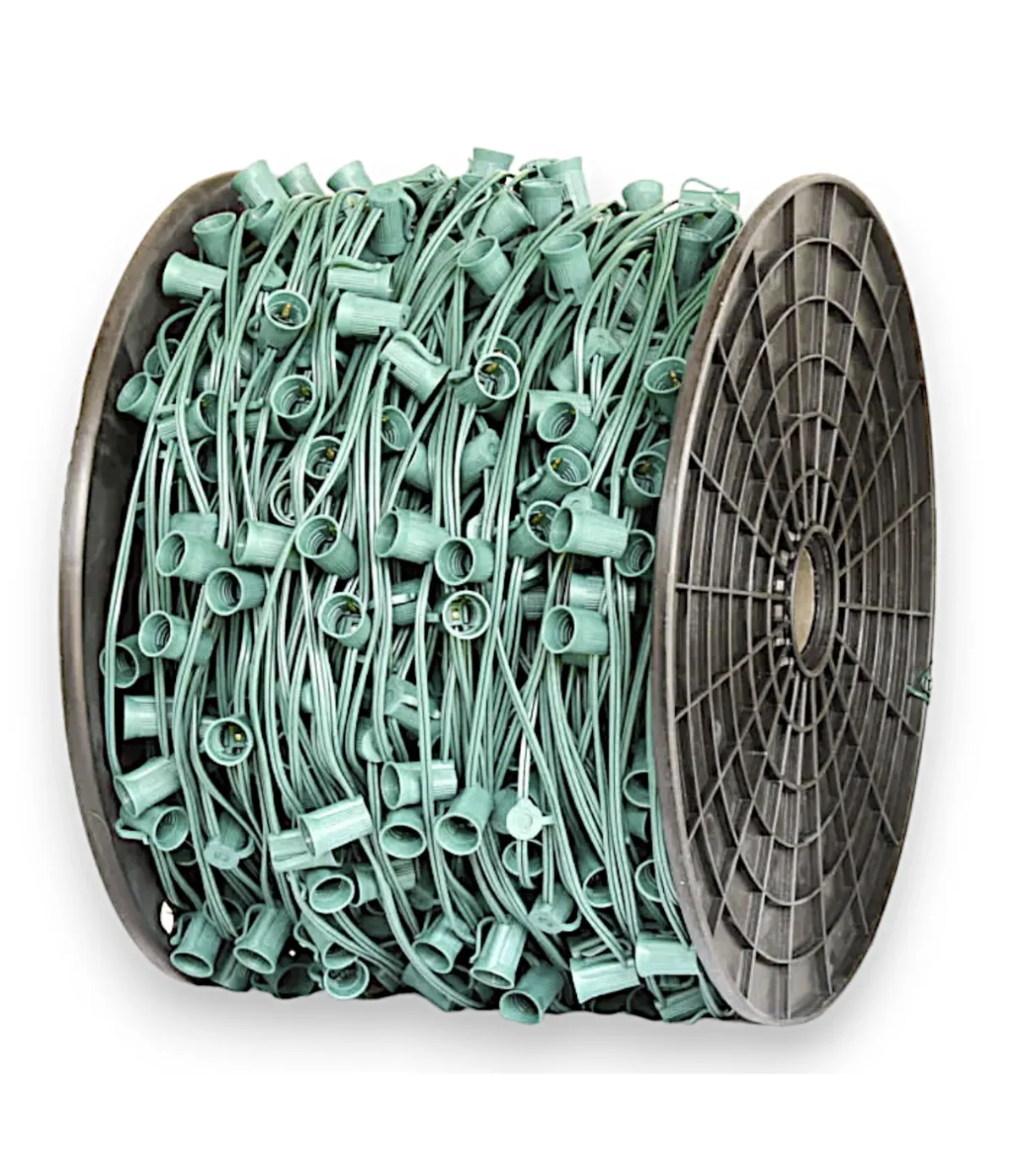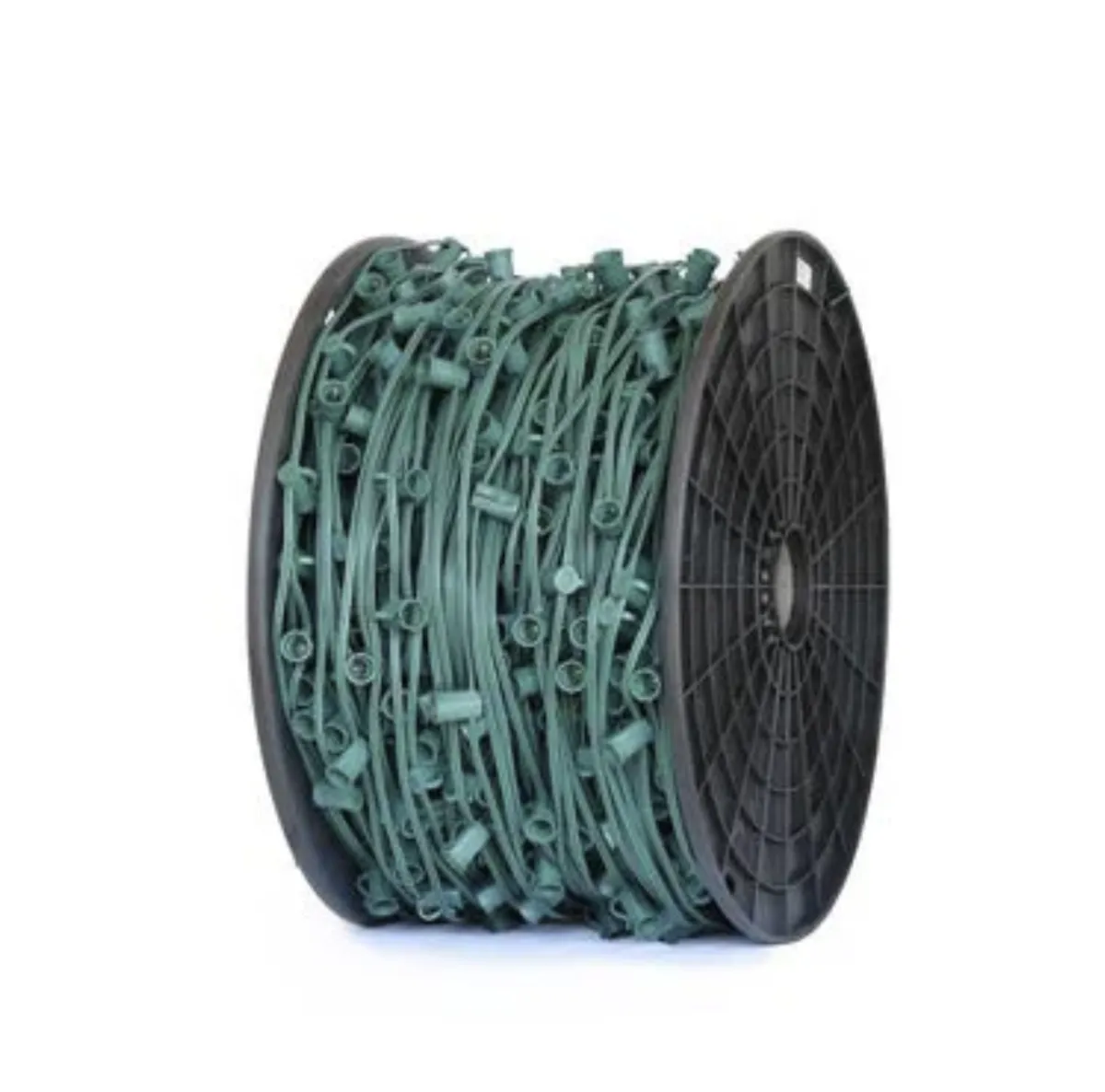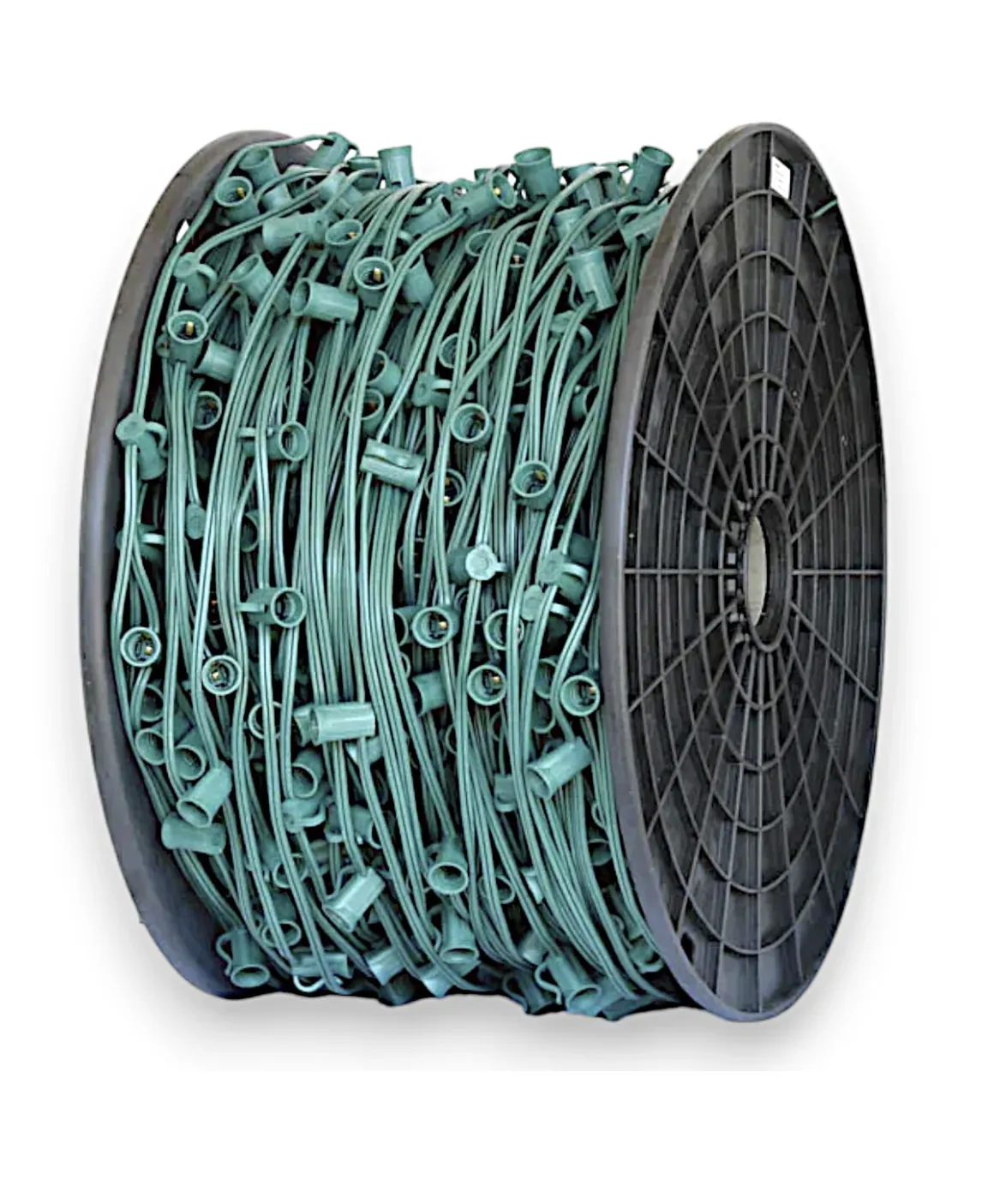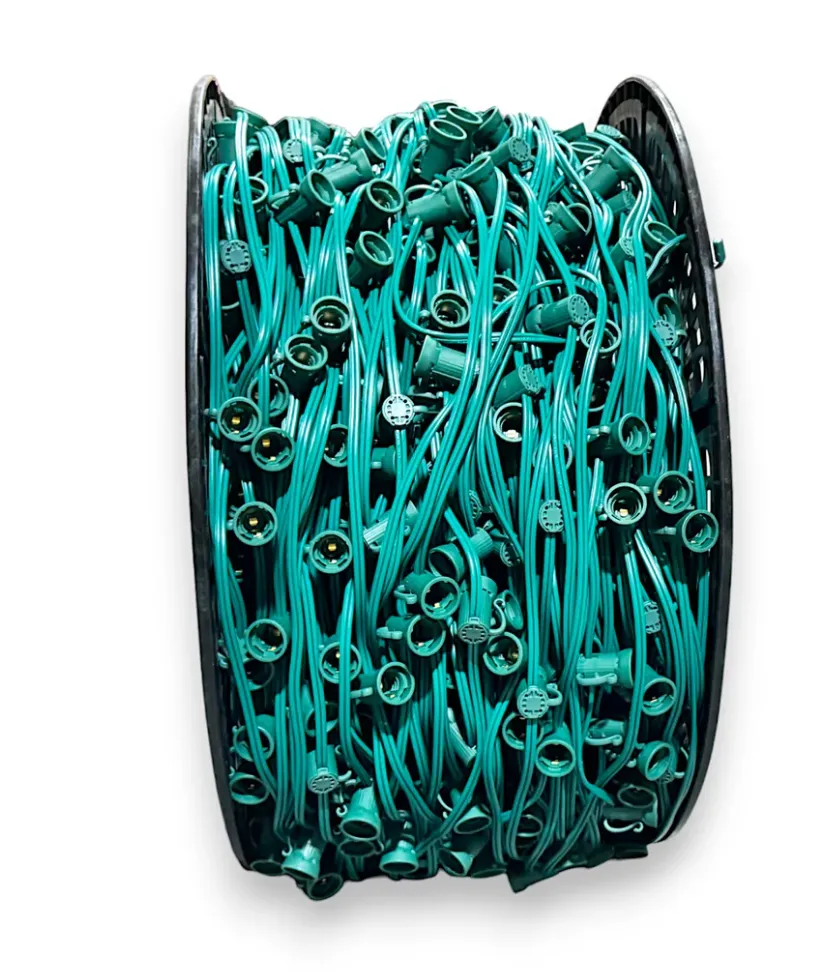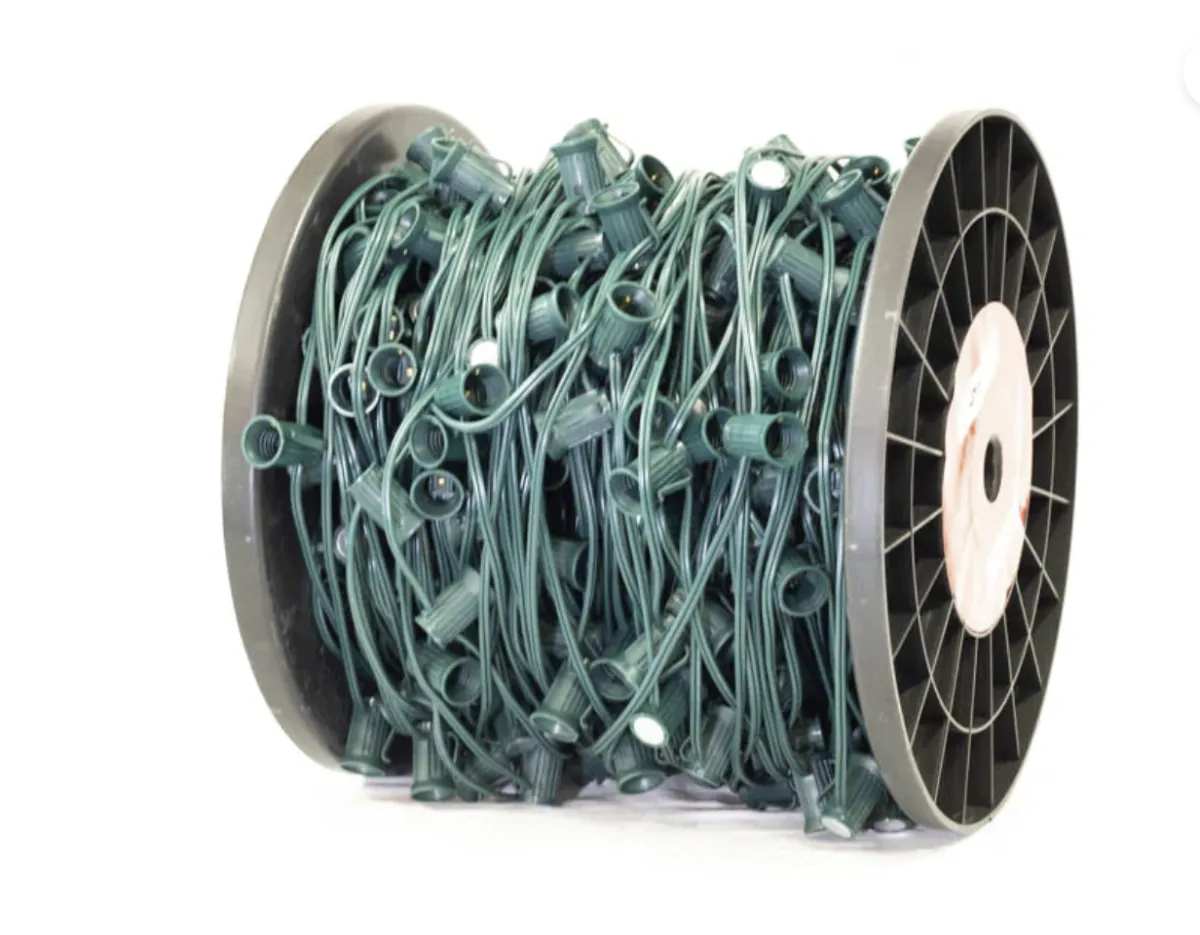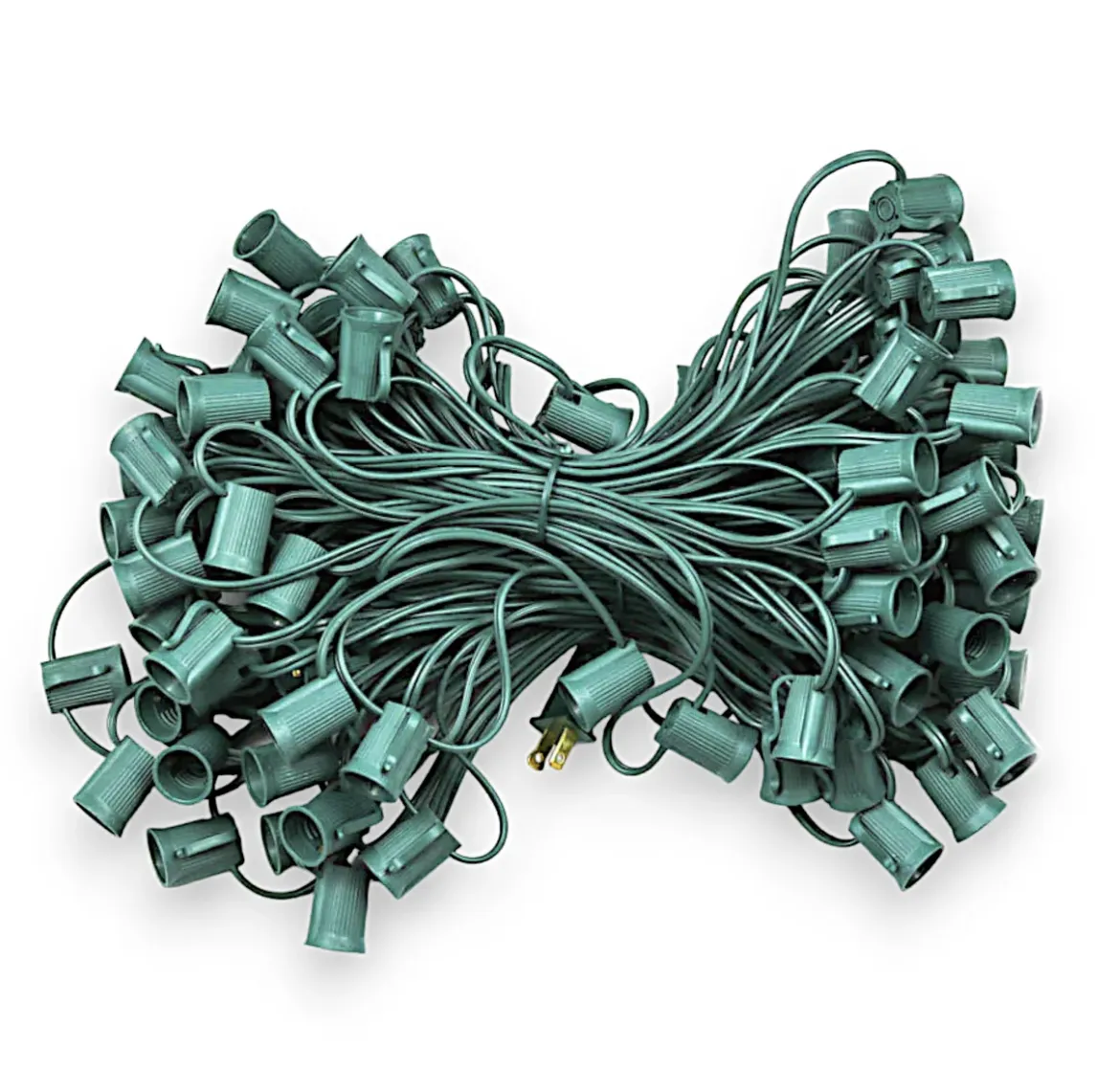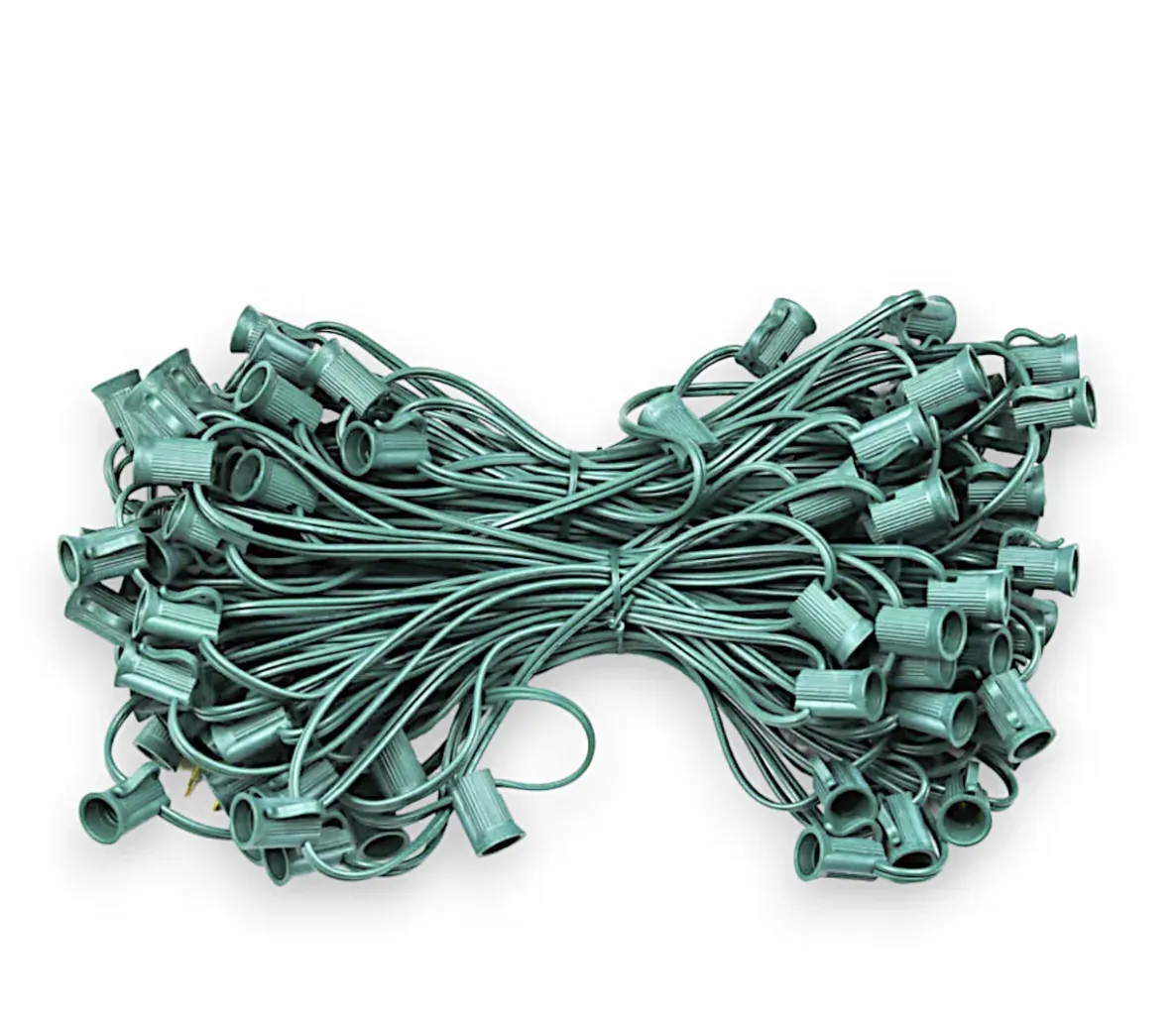C9 & C7 Socket Spools & Stringers
Discover our premium collection of socket wire spools and stringers, the essential foundation for creating stunning light displays. Designed for both professional installers and ambitious homeowners, our range includes bulk C7 and C9 socket wire spools with flexible spacing options, pre-made light stringers for quick setups, and convenient accessories like spool holders. These versatile, durable components are perfect for residential rooflines, enchanting tree displays, and large-scale commercial projects. Suitable for indoor and outdoor use, and compatible with both incandescent and LED bulbs, our professional-grade products offer the quality and flexibility needed to bring your creative lighting visions to life. Explore our selection and elevate your illumination projects with unmatched versatility and reliability.
Socket Spools
C9 1000' Socket Spool
Our C9 1000' Bulk Spool of Socket Wire, available in green or white, offers professional-grade flexibility for custom lighting projects. With spacing options from 6" to 48", it's ideal for both residential rooflines (12-15" spacing) and tree installations (24-48" spacing). The durable SPT-1 wire withstands outdoor conditions and is compatible with both incandescent and LED C9 bulbs. This customizable spool allows for precise length cutting, minimizing waste and maximizing efficiency for high-quality, adaptable lighting displays.
C9 500' Socket Spool
Our C9 500' Bulk Spool of Green Wire, available with 12" (500 sockets) or 15" (400 sockets) spacing, is perfect for professional-grade Christmas lighting installations. Featuring commercial-quality SPT-1, 8-amp wire and durable E17 sockets, this customizable spool is ideal for large-scale outdoor projects. Easily cut to desired lengths and pair with snap-on plugs (sold separately) for tailored lighting solutions in both residential and commercial settings. The 12" spacing offers vibrant, balanced lighting, while the 15" option provides a classic look with fewer bulbs per run.
C9 1000' 12"&15" Socket Wire Spool (SPT-2)
Our C9 1000' Socket Wire Spool (SPT-2) offers professional-grade flexibility with dual 12" and 15" spacing options. This customizable spool features heavy-duty SPT-2 wire for enhanced durability in all weather conditions. The 12" spacing is perfect for dense, vibrant displays on rooflines and pathways, while the 15" option provides a classic look with fewer bulbs per run. Compatible with both incandescent and LED C9 bulbs, this 1000' spool allows for precise cutting to fit any residential or commercial lighting project, ensuring efficient and long-lasting installations.
C7 1000' Green Wire Socket Spool (SPT-2)
Our 1000' bulk spool of green SPT-2 wire features 15" spacing with 1000 C7 sockets, ideal for commercial and residential outdoor displays. This 8-amp (960-watt) commercial-grade wire with Admiral Brand sockets allows for custom-length installations using snap-on plugs (sold separately). Suitable for indoor/outdoor use, it accommodates up to 160 sockets with 5-watt incandescent bulbs or 384 sockets with 1-watt LED bulbs per run. This versatile, durable C7 light line is perfect for creating professional-quality lighting displays in various settings.
C7 1000' Socket Spool
Our C7 1000' Bulk Spool of Socket Wire offers professional-grade flexibility for custom lighting projects. Available in green or white, with spacing options from 12" to 36", it's ideal for both residential rooflines (12-15" spacing) and tree installations (24-36" spacing). The durable SPT-1 wire withstands outdoor conditions and is compatible with both incandescent and LED C7 bulbs. This customizable spool allows for precise length cutting, minimizing waste and maximizing efficiency for high-quality, adaptable lighting displays in various settings.
C9/C7 500' Magnetic Spool
The Fastest Way to Install Holiday Lights on Metal Surfaces. Save time and effort this holiday season with Magnetic Spools. Designed for quick and easy installation, these magnetic spools are perfect for decorating your home or office building. The magnetic sockets eliminate the need for traditional mounting clips, making your installations faster and more efficient. Whether you’re lining rooflines, gutters, or fences, these spools are ideal for any surface where ferrous metal is present.
Available in 500' & 250', 12" or 15" Spacing.
Socket Wire Stringers
C9 12" Spacing Socket Wire Stringers
Our 25', 50' or 100' Holiday Light String features professional-grade, UV-protected 18-gauge wire with sockets spaced 12" apart. Designed for both indoor and outdoor use, these UL-recognized strings offer 5 Amp capacity SPT-1 insulation and durable sockets with weep holes for all-weather performance. Compatible with E12 Candelabra base bulbs (C7, C9, G30; sold separately), these versatile strings allow end-to-end connectivity for extended displays. Perfect for holiday decorations, event lighting, and year-round use in residential and commercial settings. Available in Green, White, Brown and Black.
C7 12" Spacing Socket Wire Stringers
Our professional-grade 25', 50' or 100' light string features sockets spaced 12" apart, perfect for commercial and residential decorators. Designed for both indoor and outdoor use, it's compatible with incandescent or LED C7, G30, and G40 bulbs (sold separately). The SPT-1 insulated wire offers 5 Amp capacity and includes weep-hole sockets for all-weather performance. With male and female plugs for end-to-end connections, these UL-recognized strings can handle up to 480 watts per run. Ideal for holiday displays, patio lighting, and year-round events, these durable strings ensure long-lasting, brilliant illumination for any occasion. Available in Green, White, Brown and Black.
Frequently Asked Questions
What's the difference between socket wire spools and stringers?
cket wire spools are bulk reels of wire with sockets at regular intervals, allowing for custom-length cuts. Stringers are pre-cut lengths of socket wire, typically with plugs attached, ready for immediate use.
Can I use the same socket wire for both C7 and C9 bulbs?
No, C7 and C9 bulbs require different socket sizes. Always check the product specifications to ensure you're using the correct socket wire for your chosen bulb type.
How do I determine the right spacing for my project?
Common spacings are 12", 15", and 24". Use closer spacing (12"-15") for dense, vibrant displays on rooflines or fences. Wider spacing (24" or more) works well for tree wrapping or creating a more subtle effect.
Are these socket wires suitable for outdoor use?
Most of our socket wires are rated for both indoor and outdoor use. Look for products labeled as "weatherproof" or "outdoor-rated" for the best durability in external conditions.
How many bulbs can I safely connect on a single run?
This depends on the wire's amperage rating and the wattage of your bulbs. For example, on an 8-amp wire, you can typically run up to 160 sockets with 5-watt incandescent bulbs or 384 sockets with 1-watt LED bulbs. Always check the product specifications and local electrical codes for safe operation.
Discover Expert Tips on Our Blog
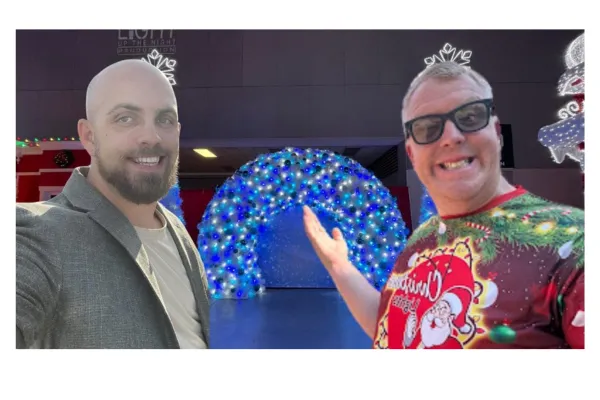
$1 MILLION Installing Christmas Lights (His Commercial Secrets Revealed)
Understanding the Commercial Christmas Lights Market
The commercial Christmas lights industry represents a significant opportunity for installers looking to scale their businesses beyond residential work. While many installers focus exclusively on homeowners, the commercial sector offers larger contracts, more predictable revenue streams, and the potential for multi-year agreements that can transform a seasonal side hustle into a thriving year-round enterprise.
Commercial work encompasses everything from small HOA entrance displays to massive shopping center installations. The key difference isn't just the scale—it's the professional approach required to succeed in this space. Property management companies, municipalities, and corporate clients expect a level of professionalism, documentation, and reliability that goes beyond what residential customers typically demand.
The Journey from Residential to Commercial
Many successful commercial installers start with residential work, building their skills, equipment inventory, and business systems before transitioning into larger projects. This progression allows you to develop the operational foundation necessary for handling complex commercial installations while generating cash flow from smaller jobs.
The transition often begins with a single commercial opportunity—perhaps a $20,000 contract spread over several years. While this might seem modest compared to some residential neighborhoods, the key advantage lies in the projected revenue and professional relationships you build. A six-year contract at $20,000 annually represents $120,000 in guaranteed revenue, provided you maintain the quality and service levels expected.
Essential Requirements for Commercial Work
Insurance and Documentation
Before approaching any commercial client, you need proper insurance coverage and documentation. Most property management companies require:
General liability insurance (typically $1-3 million)
Commercial auto insurance
Workers' compensation coverage
A current Certificate of Insurance (COI)
W-9 form with your EIN (Employer Identification Number)
Some larger clients may require excess liability policies or higher coverage limits. It's crucial to understand these requirements before bidding, as inadequate insurance will immediately disqualify you from consideration.
Business Systems and Professionalism
Commercial clients expect professional business operations. This means:
Using a Customer Relationship Management (CRM) system
Providing detailed proposals and contracts
Maintaining accurate financial records
Having clear terms and conditions
Offering professional invoicing and payment processing
Without these systems in place, you'll struggle to compete with established commercial installers who can demonstrate their professionalism through every interaction.
Finding and Securing Commercial Clients
Building Relationships with Property Managers
Property management companies control numerous commercial properties and can become valuable long-term partners. To connect with them:
Research local property management companies
Call and ask about their vendor requirements
Request information about becoming an approved vendor
Understand their credentialing process (which can take 45+ days)
Follow up consistently and professionally
Property managers want reliable vendors who make their jobs easier. They're managing multiple properties with various maintenance needs, and Christmas lights are just one component. Position yourself as a solution provider who can handle everything related to holiday lighting without creating additional work for them.
Understanding RFPs and Municipal Contracts
Municipalities and large corporations often use Request for Proposals (RFPs) to select Christmas lighting vendors. Learning to navigate this process opens doors to substantial contracts. Key points include:
Monitor city and county websites for RFP announcements
Understand the specific requirements and submission deadlines
Provide detailed responses addressing every requirement
Include proof of insurance, references, and portfolio examples
Be prepared for longer decision-making timelines
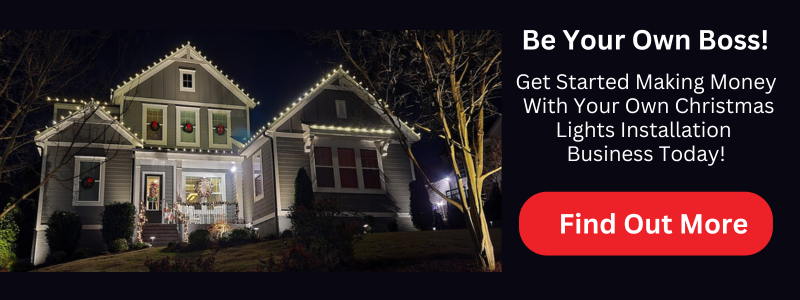
Pricing and Profitability in Commercial Work
Understanding Profit Per Man Hour
One crucial metric for commercial work is profit per man hour—not just gross revenue. A $5,000 HOA entrance that takes one crew half a day to install may be more profitable than a $20,000 installation requiring a week of labor. Calculate your true profitability by considering:
Material costs
Labor expenses (including payroll taxes)
Equipment depreciation
Travel time and vehicle costs
Administrative overhead
Commercial work often provides better profit margins per man hour than residential, but only when properly priced and efficiently executed.
Avoiding Common Pricing Mistakes
Many installers underbid commercial work, either from inexperience or desperation to land contracts. This leads to:
Inadequate profit margins
Inability to scale operations
Poor service quality due to resource constraints
Eventual business failure
Review your pricing annually and ensure it reflects your true costs plus a healthy profit margin. Remember that commercial clients often value reliability and quality over the lowest price.
Managing Commercial Projects Successfully
Equipment and Inventory Considerations
Commercial installations require different equipment than residential work. Consider investing in:
Commercial-grade LED lighting
Heavy-duty extension cords and power distribution
Specialized installation equipment (lifts, tall ladders)
Storage solutions for off-season inventory
Custom elements like tower trees or oversized displays
Plan your equipment purchases strategically, as unutilized assets drain profitability. However, having the right tools enables you to take on lucrative projects that competitors can't handle.
Communication and Service Standards
Commercial clients expect prompt, professional communication. This includes:
Responding to maintenance calls within 24 hours
Providing regular project updates
Documenting all work with photos
Addressing concerns immediately
Maintaining consistent quality standards
Remember that many people see commercial displays—every burned-out bulb reflects on your company's reputation. Build maintenance into your pricing and service model.
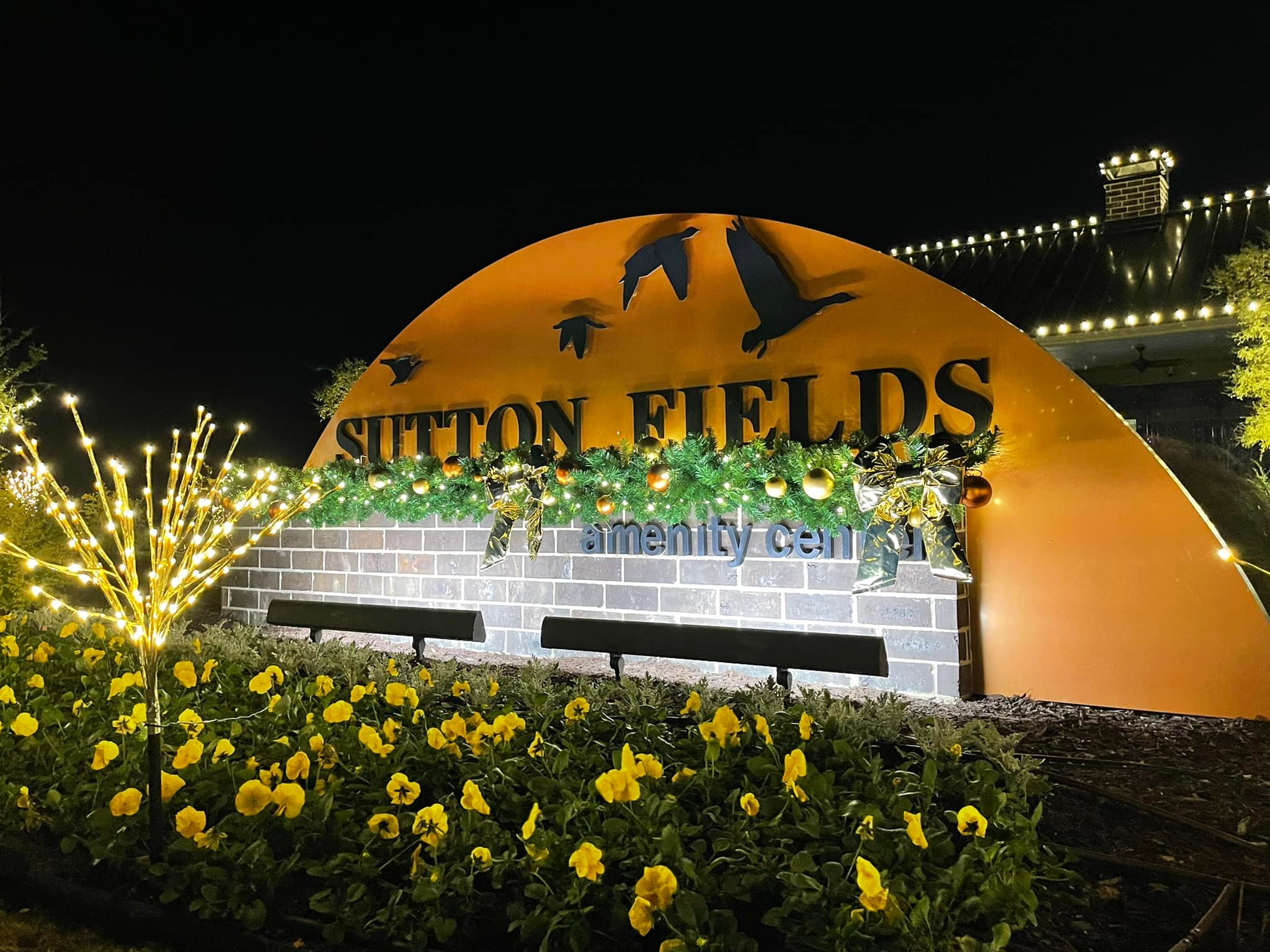
Scaling Your Commercial Operations
Building a Team
As you grow, you'll need reliable team members who can maintain your quality standards. Consider:
Hiring experienced installers during peak season
Training key employees for leadership roles
Creating standard operating procedures
Investing in safety training and equipment
Developing a company culture focused on excellence
Don't let fear of employees starting competing businesses prevent you from building a team. Focus on creating an environment where talented people want to stay and grow with your company.
Diversifying Your Commercial Portfolio
Avoid dependence on a single large client. Instead:
Target different market segments (retail, office, municipal)
Vary contract sizes and complexity
Build relationships with multiple property managers
Maintain a mix of commercial and high-end residential work
Plan for 10% annual client turnover
This diversification protects your business from the loss of any single contract while providing opportunities to upgrade to more profitable accounts.
Long-Term Success Strategies
Continuous Improvement
The commercial Christmas lighting industry evolves constantly. Stay competitive by:
Attending industry training and networking events
Learning from other successful installers
Investing in new technology and techniques
Refining your processes each season
Seeking feedback from clients and employees
Financial Management
Proper financial management becomes critical as you scale. Work with:
A qualified CPA familiar with seasonal businesses
Banking partners who understand your cash flow cycles
Insurance agents who can properly cover your risks
Legal counsel for contract review and protection
These professionals help you avoid costly mistakes and maximize profitability.
Building Your Reputation
In commercial work, reputation matters more than advertising. Focus on:
Delivering exceptional results on every project
Maintaining a professional portfolio and website
Collecting testimonials and case studies
Participating in industry associations
Building relationships throughout your market
Your reputation becomes your most valuable asset for securing new commercial contracts.
Transitioning from residential to commercial Christmas lighting installation requires dedication, professionalism, and strategic thinking. While the barriers to entry are higher than residential work, the rewards include larger contracts, predictable revenue, and the satisfaction of creating spectacular displays that thousands of people enjoy.
Success in commercial installation isn't about having the most equipment or the lowest prices—it's about understanding what commercial clients value and consistently delivering on those expectations. By focusing on professionalism, building strong relationships, and maintaining high standards, you can build a thriving commercial Christmas lighting business that provides year-round income and opportunities for growth.
The commercial market has room for installers who approach it professionally and strategically. Whether you're just starting to explore commercial opportunities or looking to expand your existing commercial operations, remember that success comes from treating this as a genuine business venture, not just a seasonal side hustle. Invest in the right insurance, systems, and relationships, and you'll find that commercial Christmas lighting can transform your business and your future.

What insurance coverage do I need for commercial Christmas lights installation?
Most commercial clients require general liability insurance between $1-3 million, commercial auto insurance, and workers' compensation coverage. Some larger clients may require excess liability policies. You'll need to provide a current Certificate of Insurance (COI) listing all coverage. Contact property management companies directly to understand their specific requirements, as they can vary significantly.
How long does it take to become an approved vendor for property management companies?
The vendor credentialing process typically takes 45 days or longer. This includes submitting your insurance documentation, W-9 form with EIN, business references, and completing their third-party verification process. Start this process well before the holiday season to ensure approval in time for bidding opportunities.
What's the difference between residential and commercial Christmas lights work?
Commercial work requires higher insurance limits, more extensive documentation, professional business systems, and different communication standards. While residential customers may accept informal quotes via text, commercial clients expect detailed proposals, contracts with clear terms, and professional invoicing. The scale is larger, but the profit per man hour is often better with multi-year contracts providing predictable revenue.
How do I calculate profit per man hour for commercial jobs?
Calculate profit per man hour by subtracting all costs (materials, labor including payroll taxes, equipment depreciation, vehicle expenses, and administrative overhead) from the job revenue, then divide by total man hours worked. A $5,000 job taking 4 hours may be more profitable than a $20,000 job requiring 80 hours of labor.
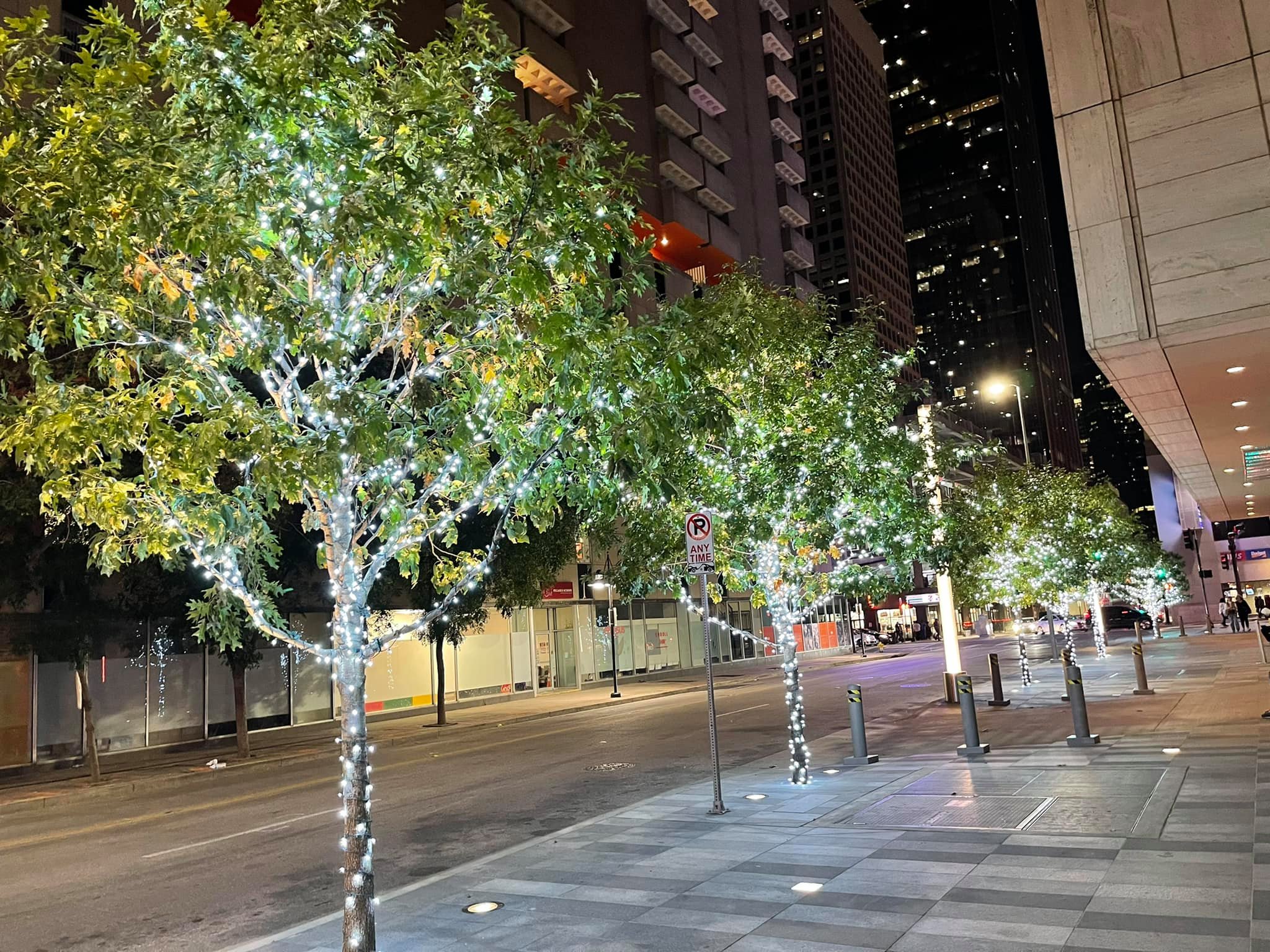
What equipment do I need for commercial installations?
Commercial installations require commercial-grade LED lighting, heavy-duty extension cords, specialized installation equipment like lifts and tall ladders, and storage solutions for off-season inventory. You may also need custom elements like tower trees. Plan equipment purchases strategically—unutilized assets drain profitability, but having the right tools enables you to bid on lucrative projects.
How do I find commercial Christmas lighting opportunities?
Start by researching local property management companies and calling to inquire about vendor requirements. Monitor city and county websites for RFPs (Request for Proposals). Build relationships by asking to become a trusted vendor and understanding their needs. Network with other contractors and join industry associations. Focus on building relationships rather than mass email campaigns.
Should I use a CRM system for commercial work?
Yes, a CRM system is essential for commercial work. It helps track multiple contracts, maintenance schedules, client communications, and financial data. Commercial clients expect professional operations, and a CRM demonstrates your ability to manage complex projects. It also provides historical data crucial for accurate bidding and helps ensure nothing falls through the cracks.
How much should I expect in annual client turnover?
Plan for approximately 10% annual client turnover in your commercial portfolio. This is normal and can actually benefit your business by allowing you to replace lower-margin contracts with more profitable ones. Diversify your client base to protect against the loss of any single large contract, and continuously prospect for new opportunities.
What's the biggest pricing mistake in commercial Christmas lighting?
The biggest mistake is underbidding to win contracts without fully understanding your true costs. This includes not accounting for maintenance calls, administrative time, equipment depreciation, and proper profit margins. Many installers focus only on material markup without considering profit per man hour, leading to busy but unprofitable operations that can't scale.
When should I transition from residential to commercial work?
Consider commercial work when you have established business systems, proper insurance, some equipment inventory, and experience managing installations. Many successful commercial installers start with one small commercial contract while maintaining residential work. You don't need to abandon residential entirely—high-end residential can be very profitable and provides good diversification alongside commercial contracts.
Copyright ©2025 All Right Reserved website designed by christmaslights.io
Terms of Service / Privacy Policy
Have questions or need assistance?
Contact us at (855)619-LITE


